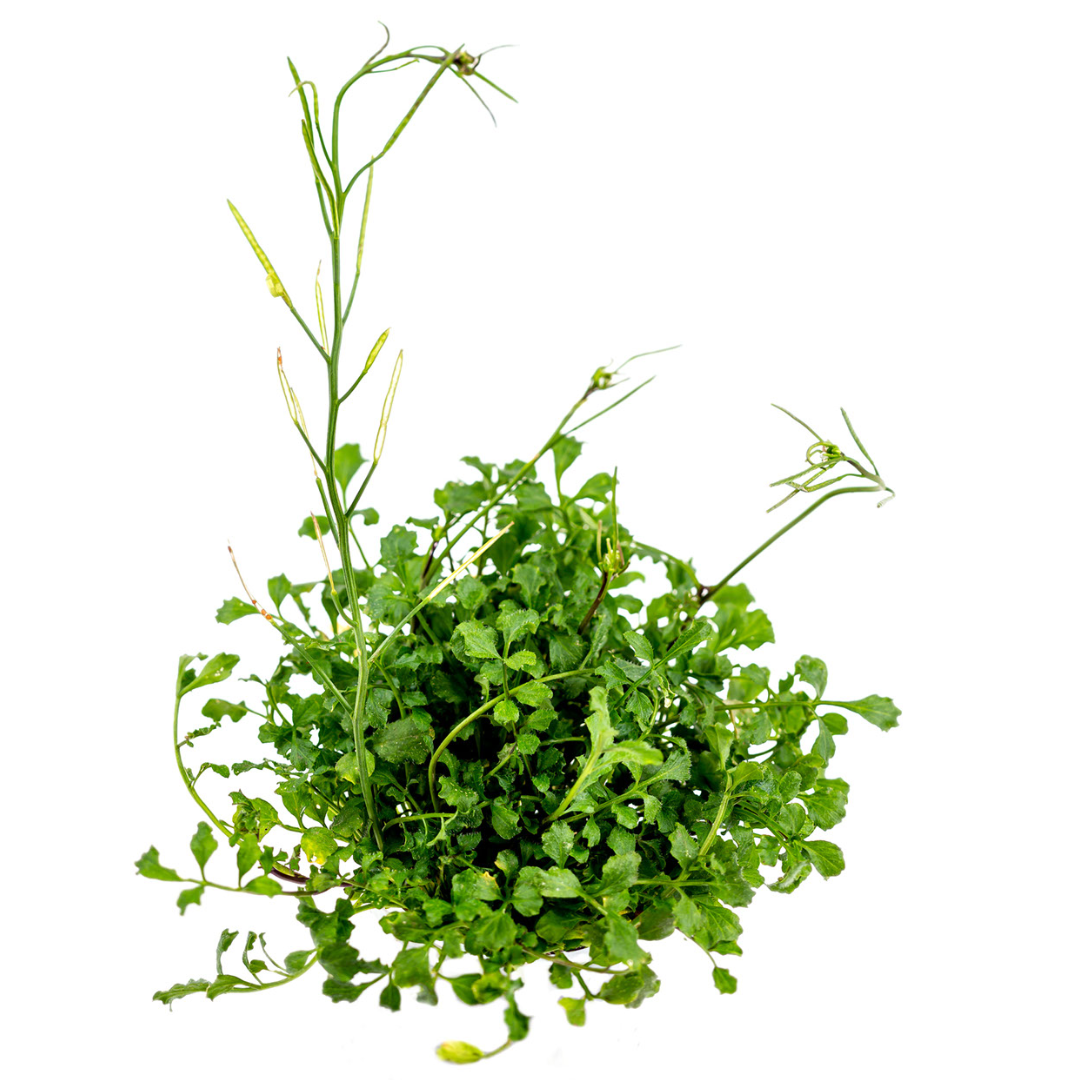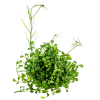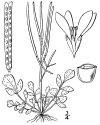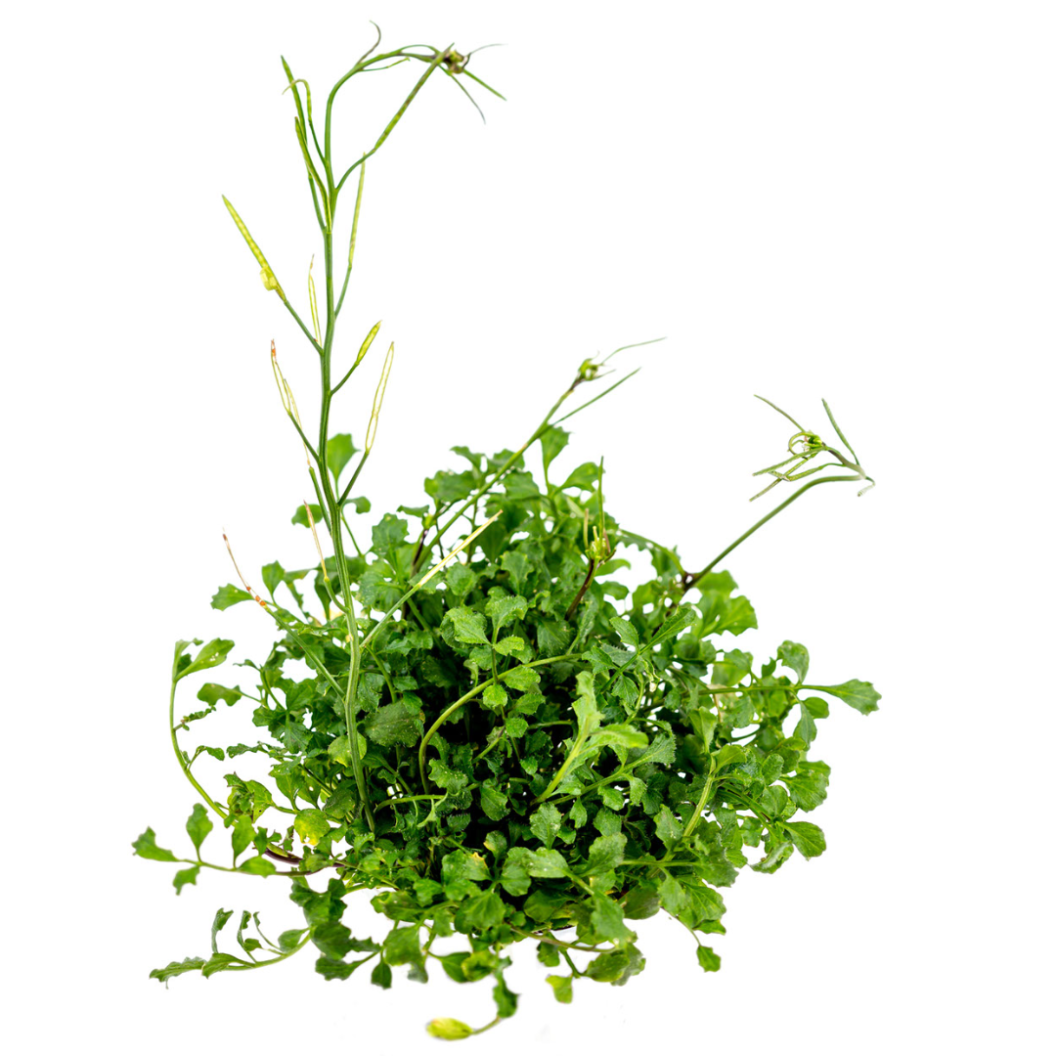




Hairy Bittercress
DESCRIPTION: This plant is a small and delicate herb that one might find growing in damp places like riverbanks or wet grasslands. It has tiny white or pinkish flowers that bloom in early spring and early summer. Its leaves are shaped like tiny arrowheads. It can be quite invasive and can quickly take over any area where it grows.
SCIENTIFIC NAME: Cardamine hirsuta
OTHER NAMES: Spring Cress, Shot Weed, Flick Weed, Jumping Jack, Peppergrass, Land Cress
LEAF TYPE: Broadleaf
FLOWERS: The flowers are small and delicate, with a diameter of about 1/8 inch (3mm). They will have four petals that are either white or pinkish in color, and they are arranged in a cross shape, similar to other plants in the mustard family. The flowers appear in clusters atop the thin stems, and they have a sweet fragrance that some consider to be quite pleasant.
LEAVES: The leaves are small and thin, with a shape that resembles an arrowhead. They are light green in color and have a slightly hairy texture. The leaves grow in a rosette pattern at the base of the plant, with each leaf having a lone stalk that attaches to the stem. When crushed or torn, the leaves release a slightly pungent scent that some may find to be unpleasant.
LIFE CYCLE: Annual
HOW TO IDENTIFY: Look for a plant with an upright stem no taller than 12 inches (30 cm) tall with bright green leaves that are shaped like arrowheads and grow in a rosette pattern at the base of the plant. At the end of the stem will be a tiny white or pinkish flowers arranged in a cluster. The flowers will be arranged in a cross shape, and they will have a somewhat sweet fragrance. Location also matters when identifying Hairy Bittercress due to their tendancy to grow on riverbanks, damp grasslands, and disturbed soils. Crushing the leaves should also provide a slightly pungent scent that some people consider to be unpleasant.
MECHANICAL CONTROL RECOMMENDATIONS:
1. Hand pulling - More Info
2. Digging - More Info
3.Mulching - More Info
4. Weeding Tools - More Info
5. Mowing - More Info
6. Tilling - More Info
7. Prevention - More Info
CHEMISTRY RECOMMENDATIONS:
"Pre-emergent herbicides:
Prodiamine: This is a commonly used pre-emergent herbicide that can provide control over a variety of annual grasses and broadleaf weeds. It is often found in products labeled for use on lawns and landscapes.
Dithiopyr: Another pre-emergent herbicide often used on lawns and ornamental landscapes. It can target annual grasses and some broadleaf weeds.
Isoxaben: This herbicide is often found in products that target broadleaf weed control in landscapes and ornamental beds. It can provide some pre-emergent control against certain broadleaf weeds.
Oxadiazon: Used for pre-emergent control of both grassy and broadleaf weeds in certain settings.
Post-emergent herbicides:
2,4-D: This is a commonly used broadleaf herbicide that can be effective against a variety of broadleaf weeds, including Cardamine hirsuta. It's often found in herbicide products formulated for lawns.
Dicamba: Another broadleaf herbicide that is effective against many types of broadleaf weeds. It's often used in combination with other herbicides to enhance effectiveness.
MCPA: This herbicide is effective against many broadleaf weeds and is often used in lawn care products.
Triclopyr: While typically used for woody plants and brush control, triclopyr can also have some effectiveness against certain broadleaf weeds.
Clopyralid: Used for selective control of broadleaf weeds, and it's sometimes found in products intended for use on lawns.
Selective herbicides:
2,4-D: This is a widely used selective herbicide that targets many broadleaf weeds, often leaving grasses unaffected. It's often used in lawn weed control products.
MCPA: Another selective herbicide effective against many broadleaf weeds in lawns.
Dicamba: Dicamba-based herbicides are used to control broadleaf weeds. They are sometimes found in combination with other herbicides for improved effectiveness.
Clopyralid: Used for selective control of broadleaf weeds and is often used on lawns.
Triclopyr: While typically used for woody plants and brush control, triclopyr can also have some selectivity against certain broadleaf weeds.
Non-Selective herbicides:
2,4-D: A widely used selective herbicide effective against many broadleaf weeds. It's often included in lawn weed control products.
MCPA: Another selective herbicide effective against broadleaf weeds in lawns.
Dicamba: Dicamba-based herbicides target a range of broadleaf weeds. They are sometimes used in combination with other herbicides for improved effectiveness.
Clopyralid: Selective herbicide used to control a variety of broadleaf weeds in lawns.
Triclopyr: While commonly used for woody plant control, triclopyr can also have some selectivity against certain broadleaf weeds.
Recommended Prevention
Recommended Control

